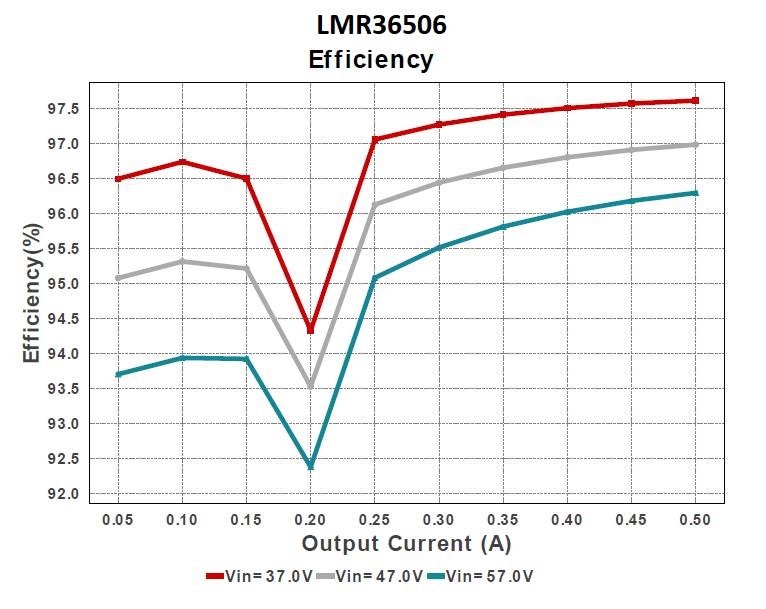Hello,
I am looking at the LMR36506-Q1 for an application targeting an output voltage of 24 V at 0.5 A max. I've attached the Webench design here:
https://webench.ti.com/appinfo/webench/scripts/SDP.cgi?ID=4F9012D9EE5EDAFD
I do have a few questions here. Is this device capable of a 24 V output? I believe so but I wanted to confirm as well since I couldn't find a specific range in the datasheet. Also, there was a strange efficiency waveform on the Webench design attached below. Is there a reason for this valley at 0.2 A on the efficiency curve?



